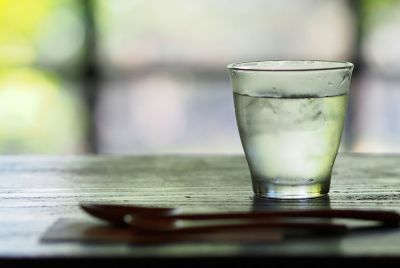Destination: Plitvice Lakes National Park, Croatia
Stepping into Plitvice National Park is like stepping into a green bubble. It's so lush it almost doesn't seem real. The thick forest surrounding the park creates a cocoon of tumbling waterfalls, rustling trees and clear lakes that can transport any visitor into one of nature's most stunning spectacles. If you are traveling in Croatia, Plitvice is an unexpected sanctuary for nature buffs, and a detour that is well worth your time.
Plitvice is the oldest national park in Southeast Europe and the largest national park in Croatia. Founded in 1949, it is situated in the mountainous region of Croatia at the border with Bosnia and Herzegovina. The park spans over 300 km² while the lakes join together over a distance of 8 km (5 miles). In 1979, Plitvice was added to the UNESCO World Heritage register - among the first natural sites worldwide. About 900,000 visitors come to the park each year.
What makes the park special is its lakes and rambling waterfalls. The 16 lakes cascade into one another to create a continuous flow of crystal clear water. They are generally split up into two groups, the upper lakes and the lower lakes, and each are supplied with water from three rivers called the Crna and Bijela (Black and White) and the Rjecica.
The azure waters and pristine woods are home to an un-paralleled mix of flora and fauna including species of spruce, sumac, maple, willow and heather trees. Black alder, grey ivy, reeds and ferns also coat the ground. Families of the European brown bear, wolf, eagle owl and over 126 species of birds live in the surrounding area. Swimming is prohibited in the park so that the dozens of fish species can continue to live undisturbed.
Whether you are by yourself or with a group, there are enough nooks and crannies and edges and alcoves to spend an entire day here, ambling around the trails and getting lost in nature.
When to Visit
There's no wrong season to visit. The frozen waterfalls and untouched snow are a beautiful sight to see in the winter. In the spring, the whole park blossoms and overflows with new life. Thousands of trees change color in the fall and coat the ground in a red, orange and yellow carpet of leaves. The summer is full of greenery, but also full of people. If you want to beat the crowds, consider visiting in the off-seasons. You'll get a unique view of the park and, without all the tourists, you'll be able to feel like you've stumbled into an untouched parcel of the world. Also, it's cheaper!
The park is open daily all year round, with longer opening hours during summer (usually 8am to 7pm). There's an entrance fee that acts as a contribution to the park's upkeep and protection:
Adults: November- April- 55 Kunas (7.40 Euros; 10.80 USD)
May & June and September & October- 85 Kunas (11.50 Euros; 17.00 USD)
July & August- 100 Kunas (14.00 Euros; 20.00 USD)
Children 7 to 18 receive discounted tickets and children under 7 are entitled to a free entrance.
Touring the Park
Visitors can engage a tour guide to take them around the most important features of the park. But, if you feel like adventuring off on your own, there are many routes you can take.
The park is laced with miles of trails that can accommodate a short walk or an all day trek. Depending upon your skill level, you can choose loops of one or two miles (1.6-3.2 km) that showcase either the lower or upper lakes; or paths of up to eight miles (12.8 km) that take you through the entire park.
Two educational trails boast informational billboards that allow the visitor to better understand the richness of the biological diversity of the Park.
For the longer trails there is a lot of walking involved, so be sure to wear comfortable clothing and sturdy shoes.
Guests can also take a tour bus through part of the park as well as a water-taxi across one of the lakes.
Staying in the Park
There are 4 hotels and 2 campsites located in Plitvice Park, but you also have a good choice of inexpensive private accommodation if you stay in Rastovaca, a small village within the park, or Korana, a small village 6km (3.7 miles) north of the main entrance. You can also stay in nearby Grabovac, which is only 12km (7.5 miles) north of the park. Many residents around the park run hostels that are usually cheaper than a hotel room.
http://www.croatiatraveller.com/Heritage_Sites/PlitviceAccommodation.htm
Getting to Plitvice
The closest airport is Zagreb airport, about 140 km (86 miles) away.
By Bus:
It takes 2 1/2 to 3 hours by bus from either Zagreb (to the North) or Zadar (to the South). There are about a dozen buses per day from Zagreb but somewhat fewer from Zadar.
Both the Zagreb Bus Station and the Zadar bus station post daily schedules to and from Plitvice. You cannot reserve seats on buses, so be sure to arrive at the station with plenty of time to get a seat.
Also, be sure to specify if you are on an express or direct bus, as local buses can make dozens of stops along the way and can double your estimated travel time.
By Car:
The national park is about 2 hours driving time from either Zagreb or Zadar. Make sure you have a clear idea of where you are going. Some towns can be miles apart and asking for directions could be hard if you don't speak the language.
For more information or to plan a trip to Plitvice Lakes National Park today visit,
© Copyright IBTimes 2024. All rights reserved.





















